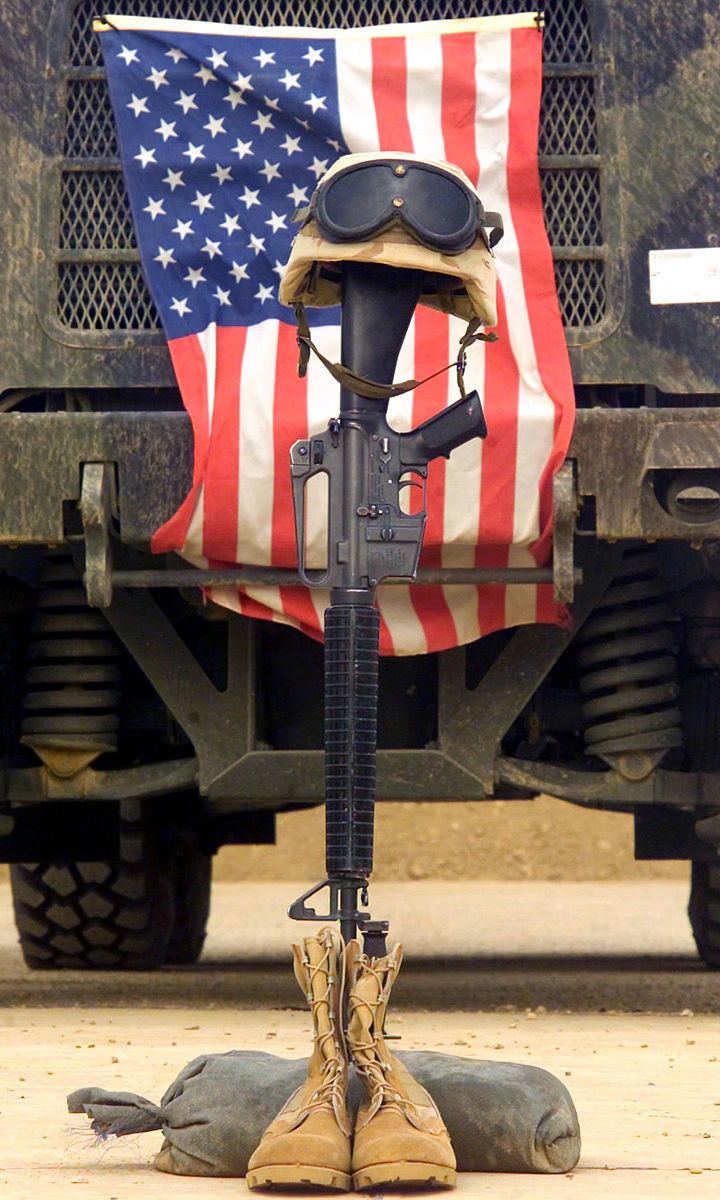 | ||
The Fallen Soldier Battle Cross, Battlefield Cross or Battle Cross is a symbolic replacement of a cross, or marker appropriate to an individual service-member's religion, on the battlefield or at the base camp for a soldier who has been killed. It is made up of the soldier's rifle stuck into the ground or into the soldier's boots, with helmet on top. Dog tags are sometimes placed on the rifle, and the boots of the dead soldier can be placed next to the rifle. The purpose is to show honor and respect for the dead at the battle site. The practice started during or prior to the American Civil War,as a means of identifying the bodies on the battleground before removal. Today, it is a means of showing respect for the dead amongst the still living members of the troop. It is commonly seen in the field or base camp after a battle, especially among American troops in Afghanistan or Iraq. While it is used less today as a means of identification, it still serves as a method of mourning among the living, as attending the funeral is not always possible for soldiers still in combat.
United States Army
This ceremony is described in US Army Field Manual (FM) No. 7-21.13, entitled "The Soldiers Guide", Appendix C "Ceremonies", Section III "Memorial Ceremony", excerpted as follows:
SECTION III - MEMORIAL CEREMONY
C-4. Memorial ceremonies are patriotic tributes to deceased soldiers. These ceremonies are command-oriented so attendance is often mandatory. The ceremony is a military function that is not normally conducted in a chapel. The content of the ceremony may vary depending on the desires of the commander.
C-5. In most cases, the unit prepares a program that may include a biographical summary of the deceased soldier with mention of awards and decorations. The following elements are commonly part of a memorial ceremony:
C-6. Most units prepare a visible reminder of the deceased soldier similar to that depicted in Figure C-1. The helmet and identification tags signify the dead soldier. The inverted rifle with bayonet signals a time for prayer, a break in the action to pay tribute to our comrade. The combat boots represent the final march of the last battle. The beret (in the case of soldiers from airborne units) reminds us that the soldier has taken part in his final jump.
